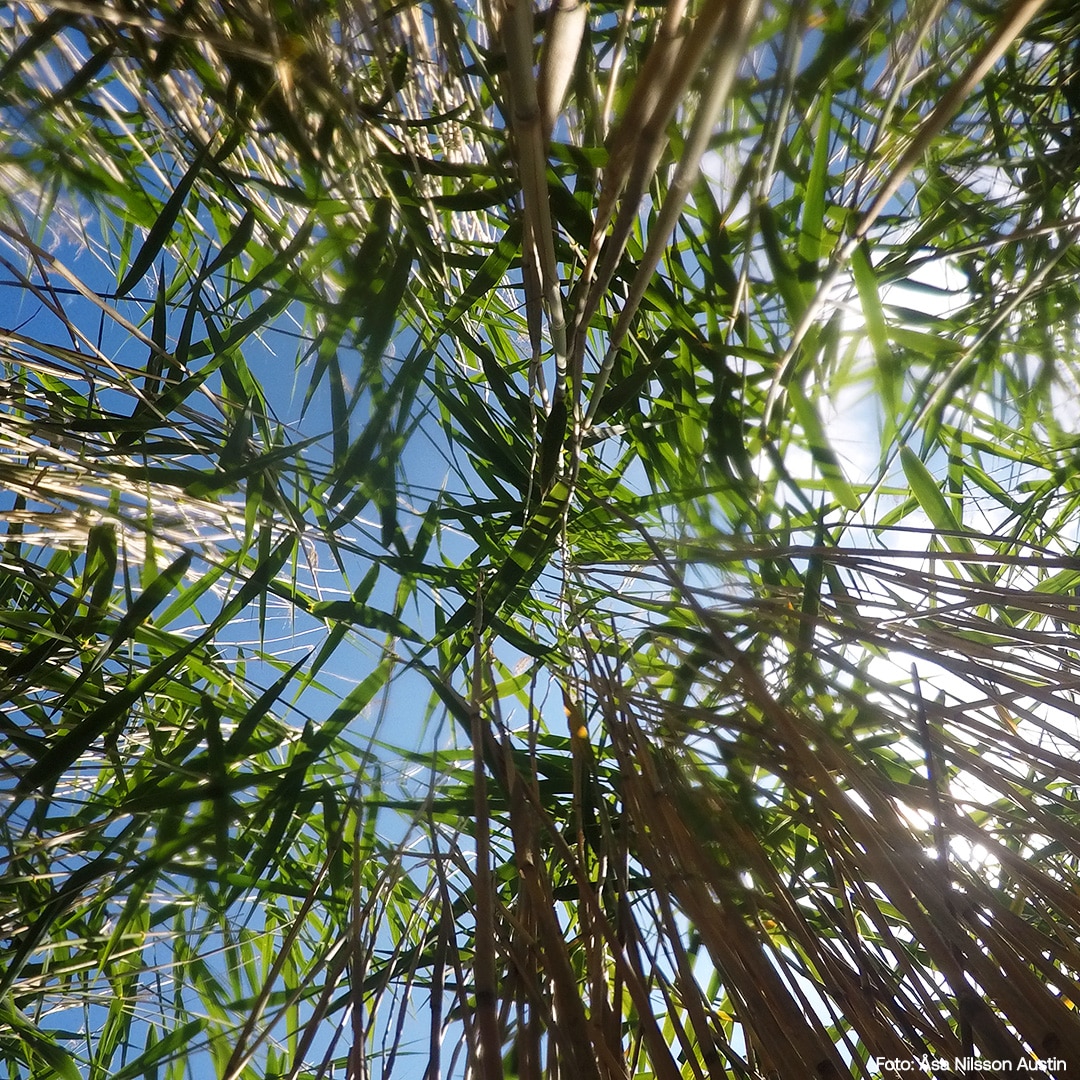With the chill of autumn, life changes in the reeds. It’s noticeably quiet – a night and day change after the spring and summer, when there’s a symphony of chirping, splashing and motion in the reeds. This may not be something people think much about, but for Åsa Nilsson Austin, PhD in Marine Ecology, the difference is striking. This isn’t so strange, given that Åsa has spent hundreds of hours in and around the reeds over the past few months.
Åsa began a two-year postdoctoral position at Stockholm University early last spring. Her research will be devoted to a case study of reeds, one of several case studies in the Thriving Bays project. She’s not working alone. Remko Pape, a student intern from the Avans Univeristy of Applied Sciences in the Netherlands, is preparing sediment samples in the lab next door. And Linda Kumblad, systems ecologist and Living Bays project manager, and Sofia Wikström, marine ecologist at Stockholm University’s Baltic Sea Centre, work a few floors above. Together, they’ve collected quantities of samples and data over the spring and summer in an attempt to answer a seemingly simple, but complicated, question: What are the effects of reed cutting on the ecosystem of shallow bays?
Variation in the reeds
The reed itself may not be something that’s normally described as complex. It’s Sweden’s largest grass and is commonly found where the coastline meets the sea. The complexity lies elsewhere – reed environments can be very different depending on the surroundings. In an enclosed wave-protected bay, for instance, a lot of sediment settles in the reeds. In more open bays, the sediment layer can be thin. Reeds grow densely in some bays and more sparsely in others, which affects sedimentation and water temperature in the reeds. The reeds’ environment is impacted by both land and water environments.
’Reeds really are the coast’s compost. Organic material accumulates here and decomposes, but this varies widely between different environments. I’ve been in reed environments with so much loose sediment that I’ve sunk all the way up to my thighs,’ says Åsa.
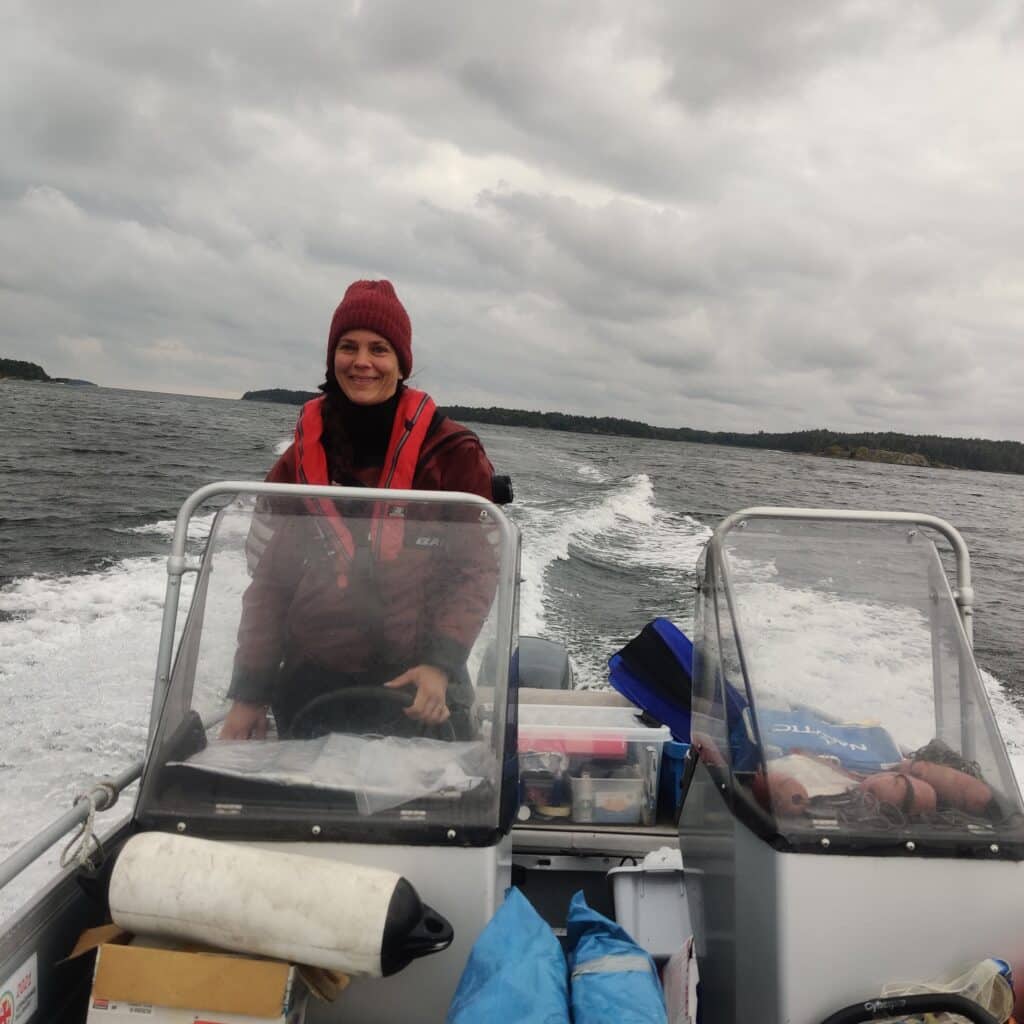
Examining a complex environment
The effects of reed cutting on the coastal ecosystem have not been particularly researched, something that Åsa and her colleagues hope to change.
‘A lot of people cut the reeds in their bays, to various extents and in various ways. With the new information we gain from the case study, we hope we can provide recommendations on situations where reed cutting can negatively affect the environment,’ says Åsa.
The project team worked in several bays in the Trosa archipelago during the summer to gather new information about this complex environment. They cut reeds and took samples in half of the bays, leaving the others untouched as control bays. Samples were taken to compare data from the control bays and the bays where reeds were cut.
Residents of Östanfjärden (also called Högklykeviken) wanted to do some reed cutting. The bay, one of the project bays for the Living Bays project, presented a good opportunity to study the effects of reed cutting. Linda Kumblad and Sofia Wikström took samples before, immediately after and a few months after the reeds were cut to identify changes caused by the cutting.
To study the effect of reed cutting on the ecosystem, Åsa and her colleagues look at the character of the reeds (e.g., shoots per square metre and shoot length and width). They also collect dead material from the bay floor where the reeds grow to examine the amount that is decomposed and whether the amount of material changes when the reeds have been cut. And they take sediment samples (also called sediment plugs) to study the different layers of the sediment. The samples are taken before and after cutting and then dried to be prepared for analysis.
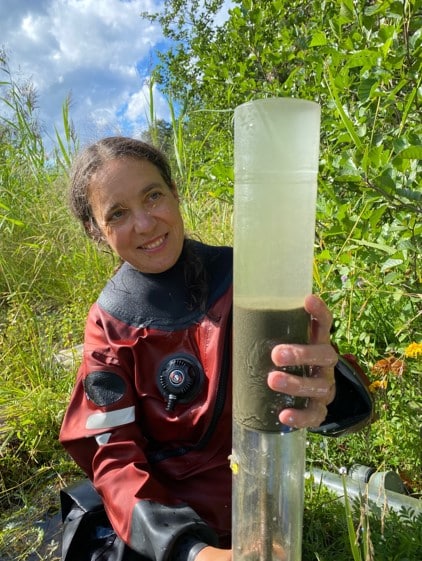
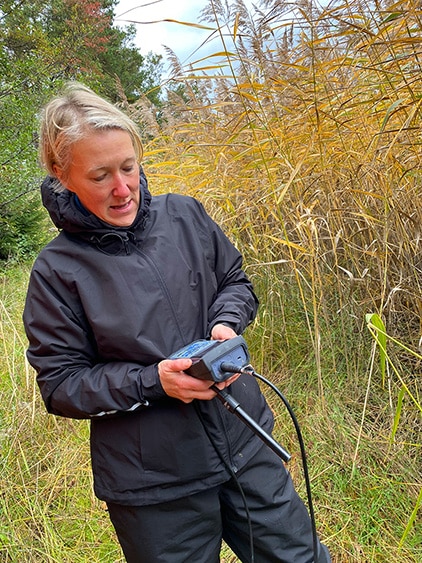
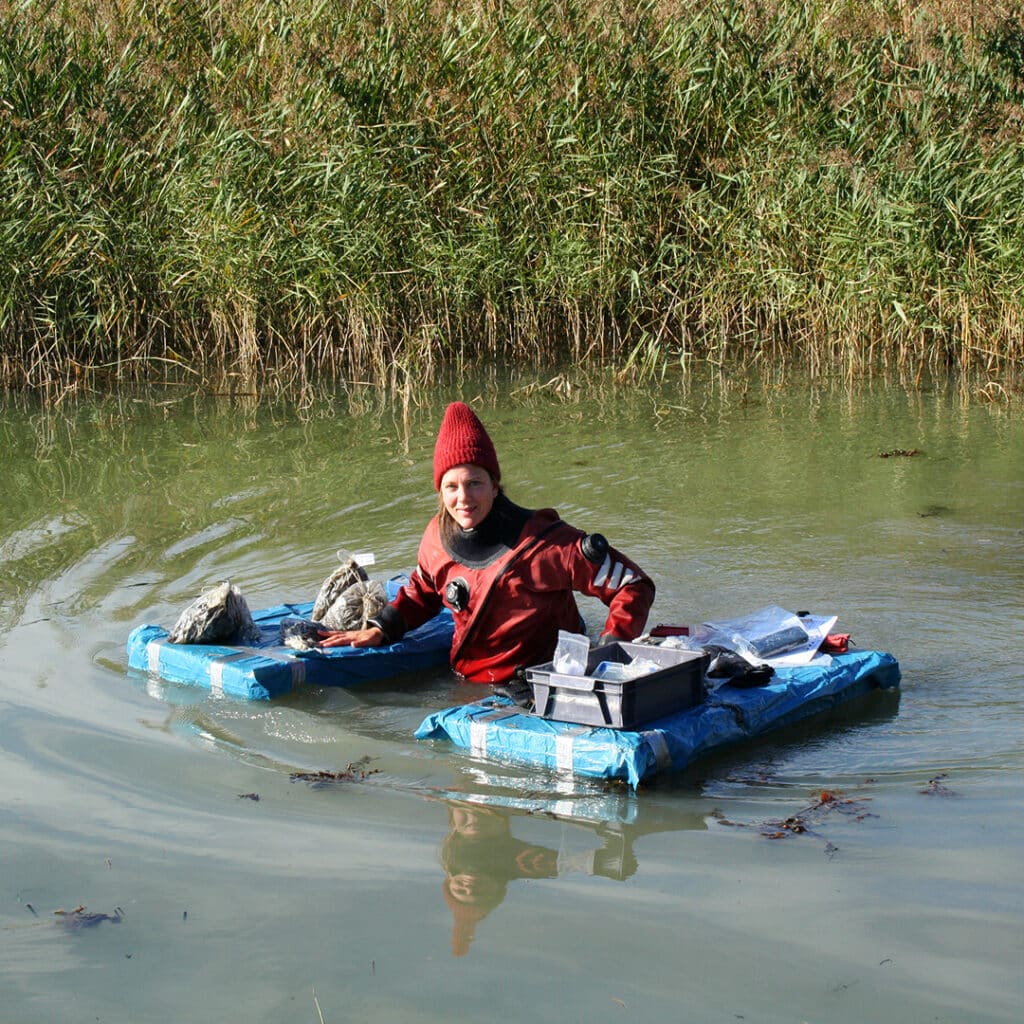
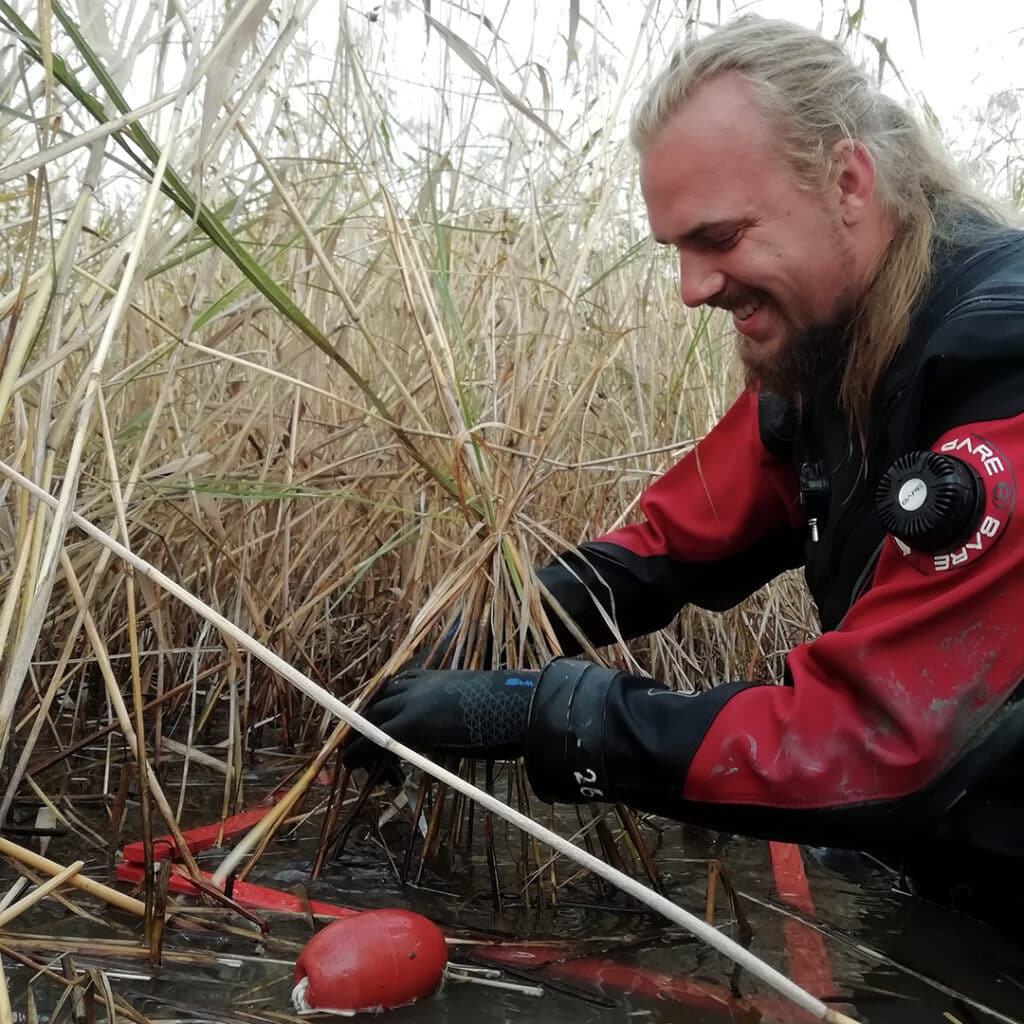
Isotopes tell a story
In the lab, sediment samples from the summer’s sampling are spread over the white tabletops. Remko, who’s working on a BA in Environmental Science for sustainable energy and technology, has so far ground and sieved close to 250 sediment samples into small plastic jars, which were then carefully stacked in glass containers.
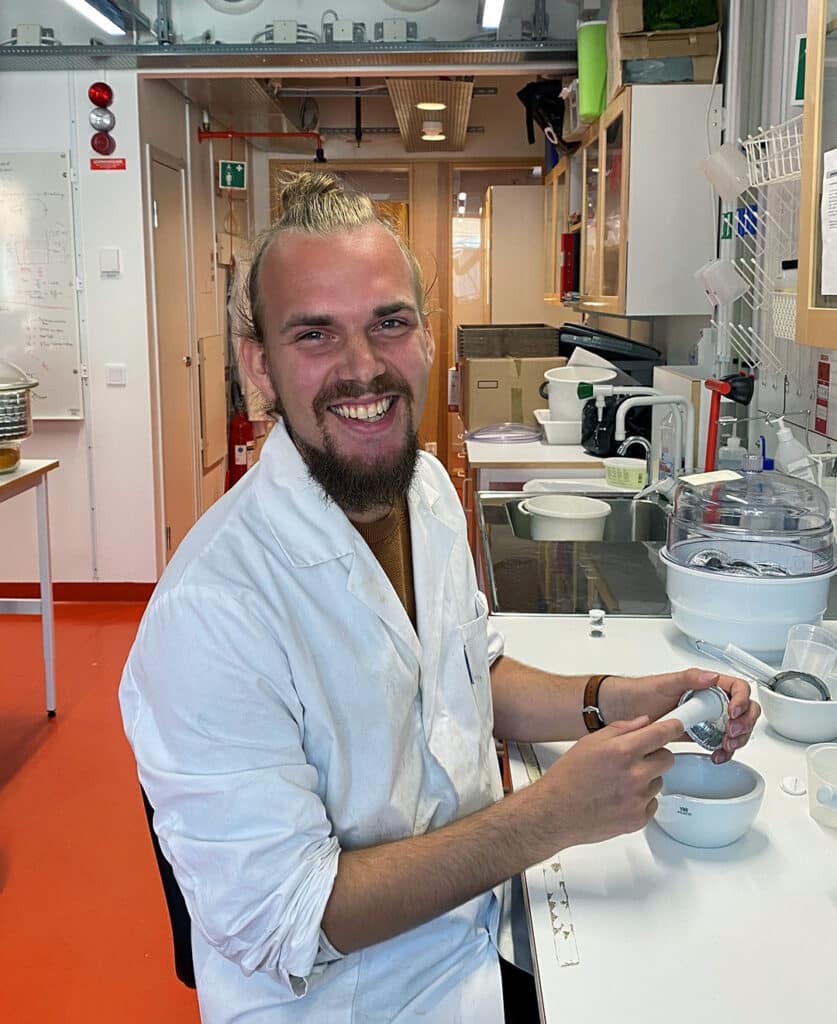
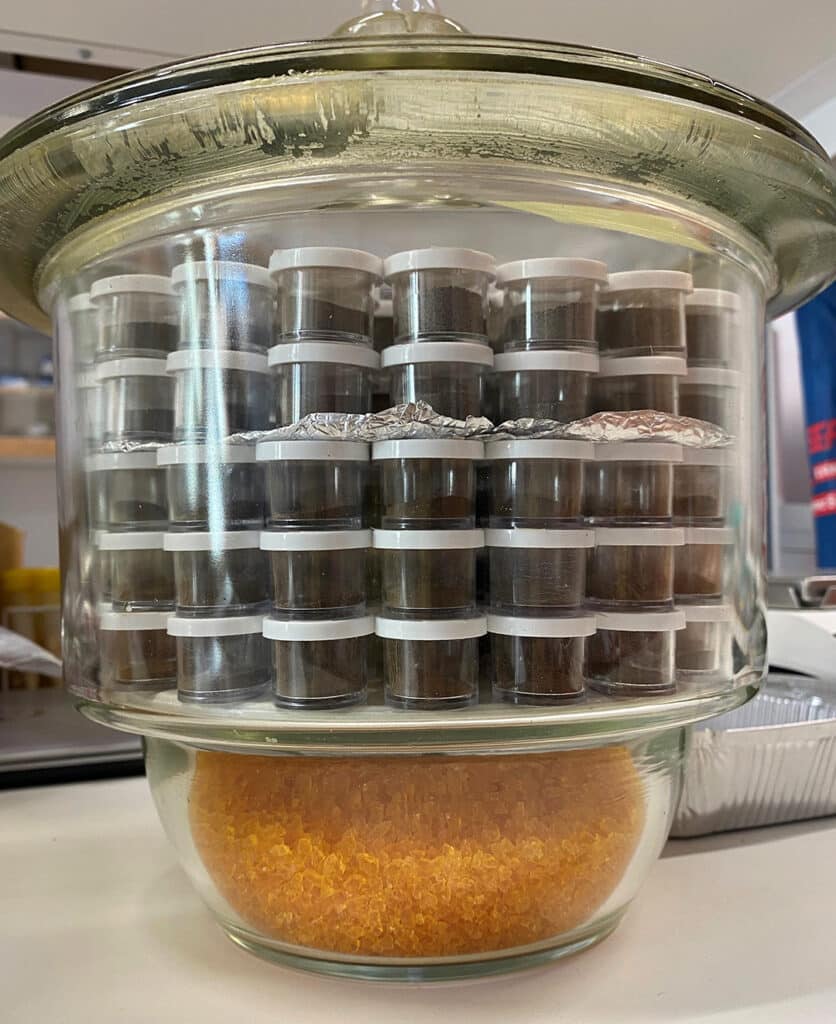
’In my programme we do international internships for 20 weeks. Reeds aren’t actually my greatest field of interest,’ Remko laughs. ‘But I’m extremely interested in how the surrounding environment affects reeds, and vice versa. I also love being in the field, which I’ve gotten to do a lot of during this internship,’ he continues.
Remko grinds each sediment sample (one sediment plug layer from a specific bay before or after reed cutting) three times into a fine powder. Using a sieve, he filters out larger particles that may affect the samples. Next, carbonate in the samples is removed and the samples are packed in small tin capsules. They’re then sent off to a lab in California for analysis of carbon and nitrogen isotopes.
‘Isotopes can provide information on how nutrients are transported throughout the ecosystem. Analyses of our sediment samples will tell us, among other things, about how much carbon and nitrogen are stored in the reeds,’ says Åsa. ‘Stable isotopes can also indicate whether the carbon and nitrogen come from land or sea. This is of interest for studying where measures should be taken to reduce eutrophication in a bay – on land or in the water. Analyses of sediment samples taken after cutting will also provide information on changes in the amounts of carbon and nitrogen in the sediment,’ she continues.
Autumn and winter lie ahead, and Åsa will spent most of her time analysing the sample results. Before the analyses are completed, there are many questions but few answers.
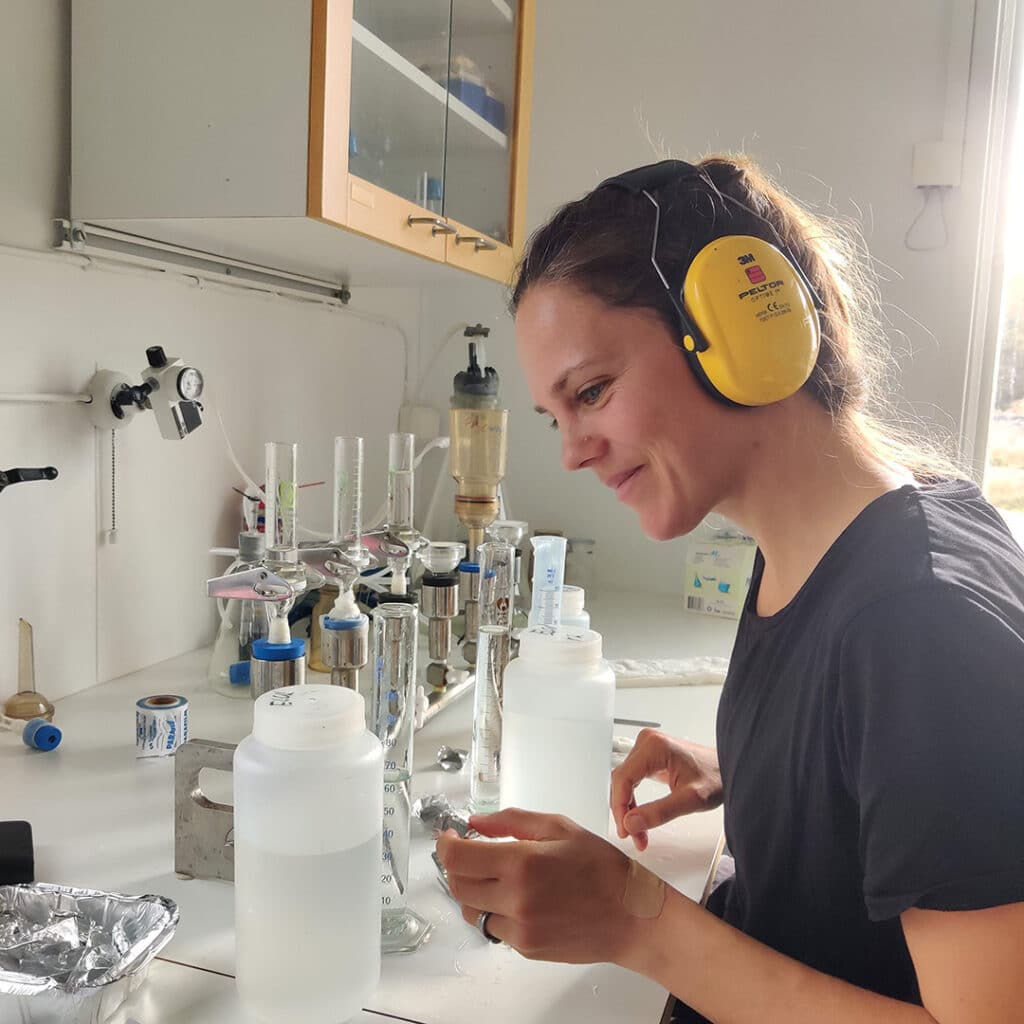
’In addition to all the sampling of sediment and material in the reeds, I’ve measured the temperature in and around the reeds continuously throughout the summer, both before and after reed cutting, to study whether cutting affects water temperature. A few degrees difference may not seem significant, but it can affect biological processes,’ says Åsa.
I leave the lab and let Åsa get back to analysing temperature data. The sound of Remko’s sediment grinding subsides as I close the door, and it’s noticeably quiet. Maybe as quiet as it is in the reeds.
More about the Thriving Bays project
The purpose of the Thriving Bays project is demonstrate that it is possible to improve the environment of shallow bays and to develop awareness of how this can be done cost effectively. The project will test and evaluate measures individually in a series of case studies and will conduct full-scale restorations of some shallow bays along the Svealand coast. The Living Bays project, which will continue through 2027, is carried out and financed by BalticWaters in close collaboration and with financial support from Stockholm University and the Stockholm County administrative board. The Swedish Agency for Marine and Water Management (SwAM) has contributed funds to Stockholm University for sampling and follow-up work in the project bays. A total of over SEK 45 million is being invested in the project.
